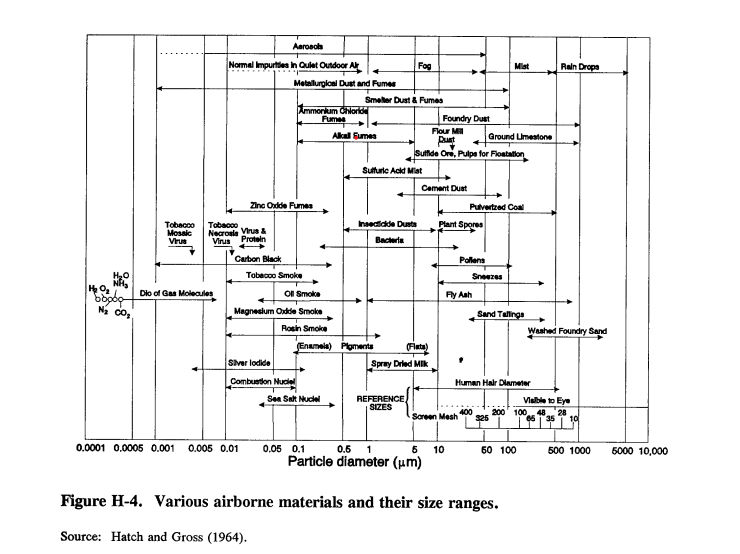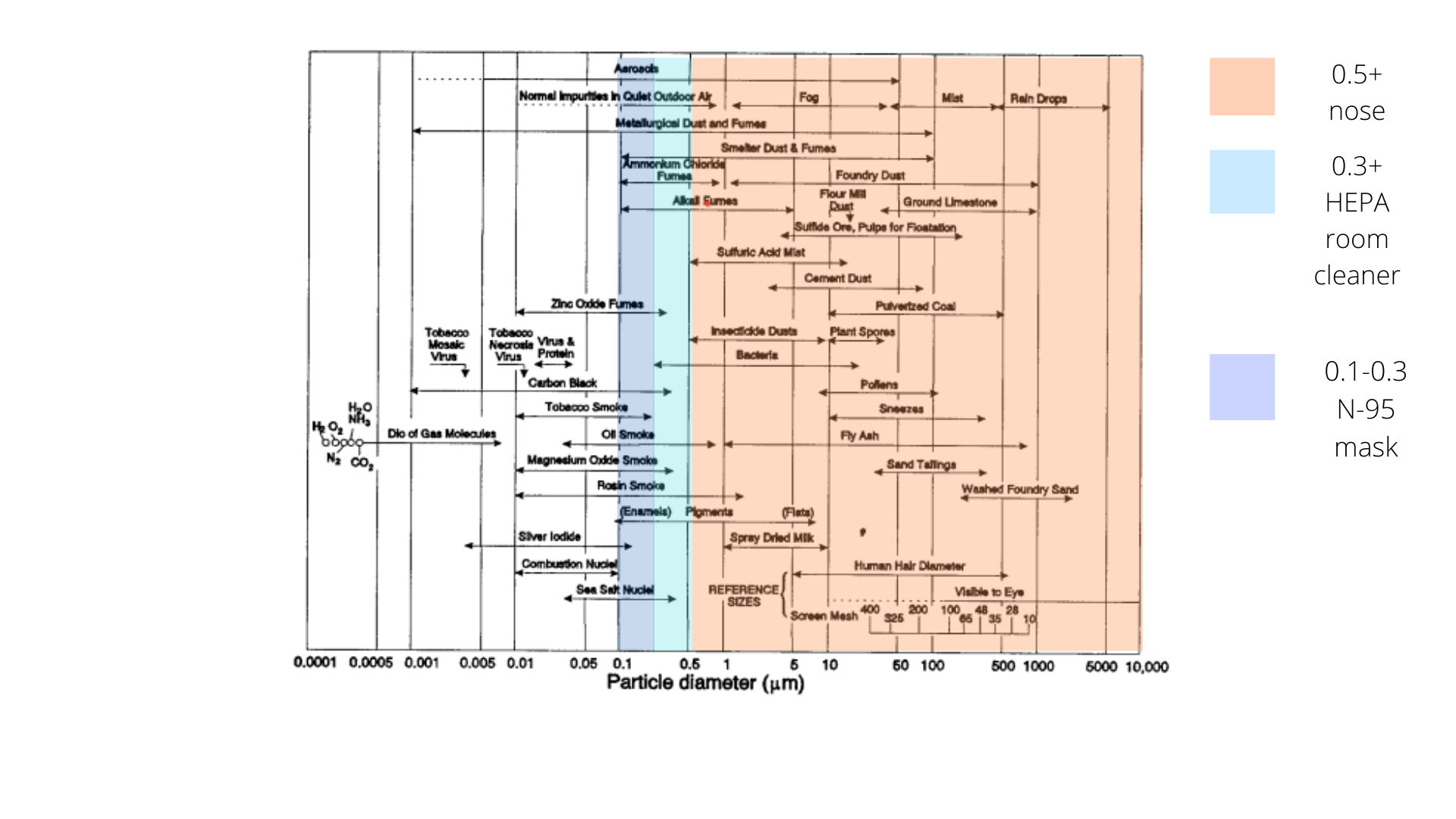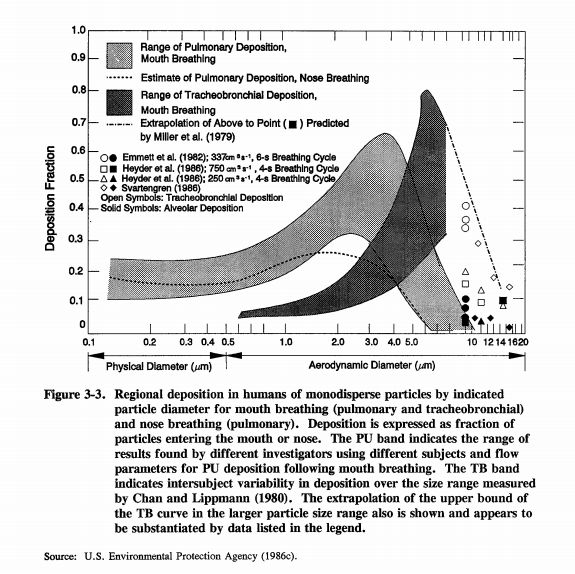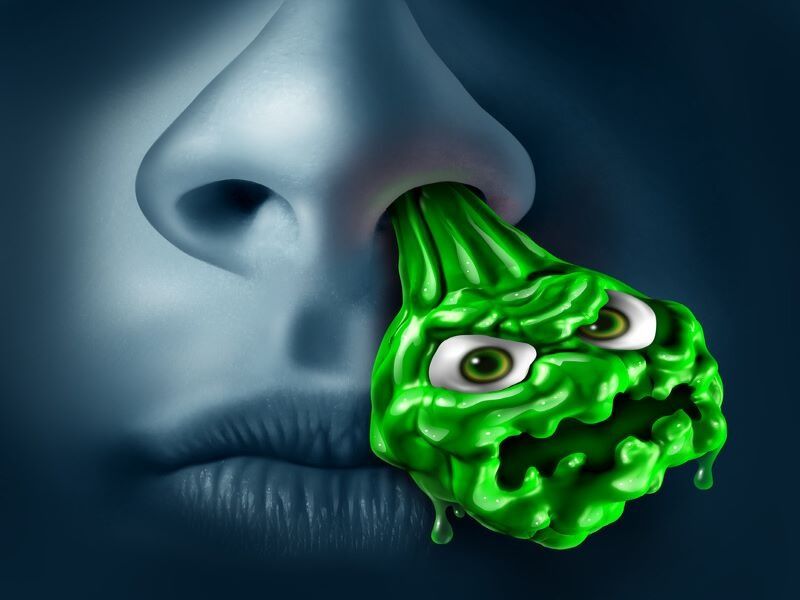We just posted a two-part video series called Principles of Defensive Breathing: How To Breathe In Bad Air on our YouTube channel. (Subscribe here!)
The first part goes over how and why the Defensive Breathing Formula works.
The second video proves nasal breathing is superior to mouth breathing in a polluted environment by the numbers!
It turns out, our noses can filter many allergens, pollutants, smoke and germs almost as well as a standard air purifier. Discover the microscopic measurements of everyday irritants, and the protective filtration ratings of the nose, mouth, masks and room filters.
Scientists have found that the nose can generally filter particles larger than 0.5 microns. A standard HEPA room air purifier is rated to filter 0.3+ microns, the U.S. Department of Energy standard. And the highest rated face mask, the N-95, has a bottom limit of 0.1-0.3 microns, according to the National Industrial Hygiene Association.
Here's a graphic from the U.S. Environmental Protection Agency that shows the sizes of common particles, and then a second version where I overlaid the filtration limits of the nose, standard air purifiers and N-95 masks onto the original chart.


Particles larger than 0.5 microns include pollen, pet dander, human sneezes, antiperspirant, asbestos, auto emissions, copier toner, mold, mold and plant spores, smoke from synthetic materials and some dust, according to The Engineering Toolbox and the EPA.
Particles smaller than 0.5 microns include tobacco smoke, smoke from the burning of natural/organic materials (ie forest fires), viruses and products of combustion. Gas is not a particle but is in the category of elements we cannot shield ourselves from easily.
Smoke and dust in general come in many sizes and are hard to categorize. This is true too of bacteria. They all range from microscopic to visible, so they are included in all categories.
Here is an EPA graphic that demonstrates more particles are inhaled with mouth breathing than nasal breathing.

The main sources for these videos are:
Laryngoscope. 1998 Jan;108(1 Pt 1):120-4. doi: 10.1097/00005537-199801000-00023. https://pubmed.ncbi.nlm.nih.gov/9432080/
US EPA Methods for Derivation of Inhalation Reference Concentrations and Application of Inhalation Dosimetry (particle sizes and nasal/mouth breathing differences): https://www.epa.gov/risk/methods-derivation-inhalation-reference-concentrations-and-application-inhalation-dosimetry
The Engineering Toolbox. https://www.engineeringtoolbox.com/particle-sizes-d_934.html
Breathing Retraining Center offers individual and group training and coaching on self-management techniques to identify and correct poor-breathing habits. Breathing Retraining Center's educational products, courses and coaching are designed to improve breathing skills for people whose issues may be related to habits that have the potential to be improved, as a self-care/wellness activity. Breathing difficulty may be a warning sign of a life-treatening heart or lung condition, infection or other illness. Always check with your doctor about your own situation.
The Buteyko Breathing Technique and other breathing-retraining strategies we teach are an alternative approach and are not the practice of medicine, psychology or a form of psychotherapy, nor are they a substitute for seeking medical or psychological advice from an apporpriate professional health-care provider. We want to make the important distinction between using the Buteyko Breathing Technique and other breathing-retraining strategies for health and well-being and the practice of medicine, psychology or any other licensed health-care profession.
Breathing classes, coaching and other services from Breathing Retraining Center are offered by teachers who are not licensed by the State of California as physicians or other healing-arts practitioners unless so noted. We offer alternative non-medical/non-psychological techniques and our services are considered to be laternative or complementary to the healing arts that are licensed by the State of California.
.png)
